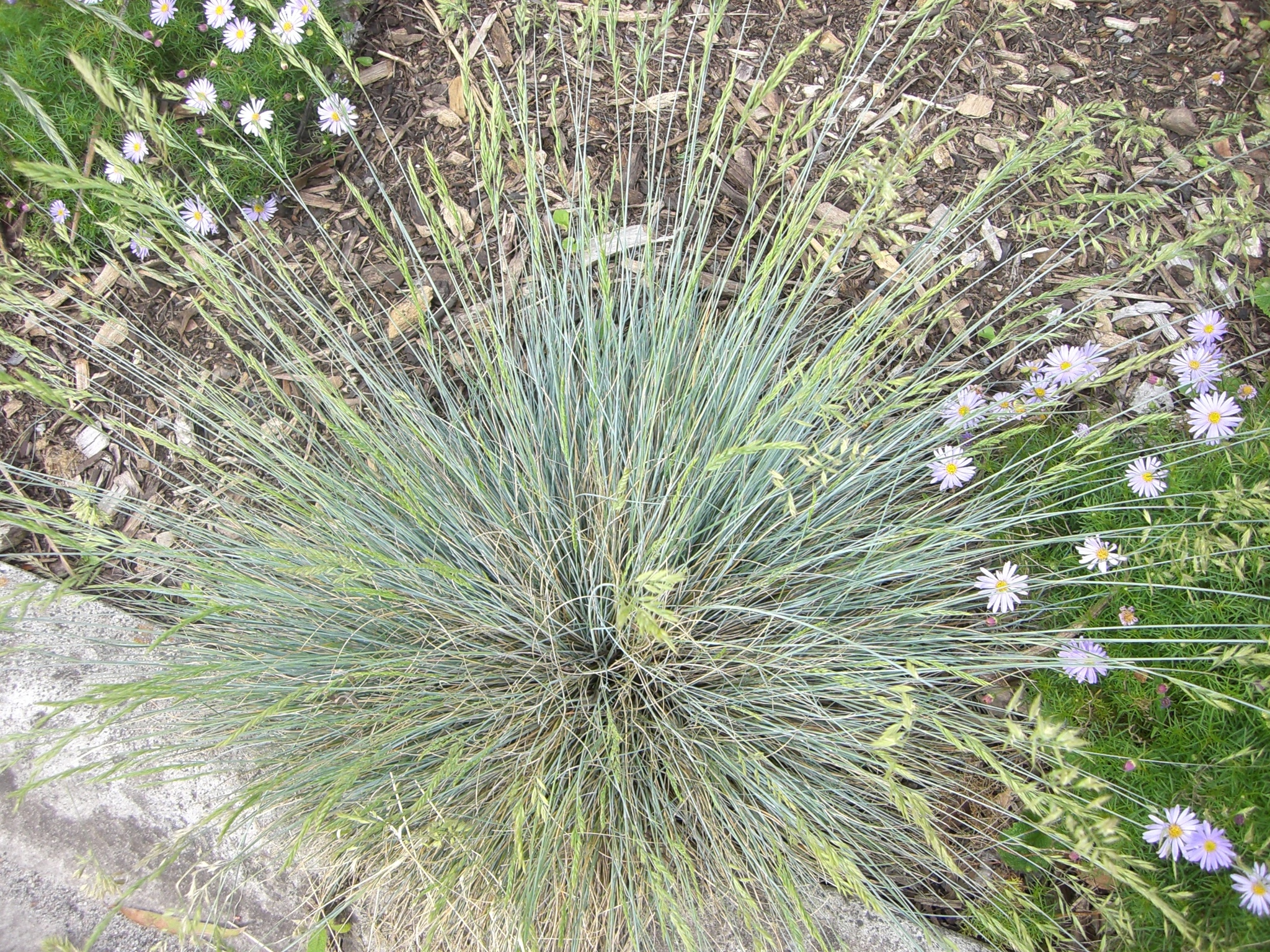
Tufted perennial with bluish waxy leaves. Leaves slender and more or less cylindrical, stiff, usually 9-veined. Inflorescence compact. Spikelets mostly 6-8 mm long with 4-7 flowers; spring to summer.
South-eastern & centralEurope
F. arundinacea Schreb., Tall Fescue, is used as pasture grass, also for home lawns, sport and athletic fields and open space. Naturalised in all states except the Northern Territory. In Victoria it grows mostly in winter wet areas.
F. rubra L. subsp. rubra is a valuable pasture and turf species for fine turf (tees, green surrounds and other low maintenance turf areas). It has naturalised around alpine resorts where it is used as a stabiliser on ski slopes etc. F. rubra var. commutata [F. nigrescens Lam. of some authors] is a popular fine-leaved lawn grass and unlike subsp. rubra which is stoloniferous, is used for turf.
F. longifolia Thuill, Hard Fescue is used primarily for soil stabilisation and low maintenance shade grass mixtures.
F. ovina L., Sheep's Fescue from Europe is a fine-leaved, fibrous rooted, turfed bunch type perennial grass. Leaf folded in bud. Leaf blade closely and permanently folded, bristle-like (0.5-2 mm wide), smooth to rough above, deeply ridged above, hairless below, pale bluish-green colour, smooth margins. Ligule membranous, short (0.3-0.5 mm long) rounded-truncated. Sheath not flattened, short, hairy, split with overlapping margins. Inflorescence an erect, narrow, condensed panicle. Used sparingly for turf purposes except as a component in poor quality lawn seed and pasture mixtures.
Wilkinson & Stace (1991).
Source: (2005). Poaceae. In: . Horticultural Flora of South-eastern Australia. Volume 5. Flowering plants. Monocotyledons. The identification of garden and cultivated plants. University of New South Wales Press.
